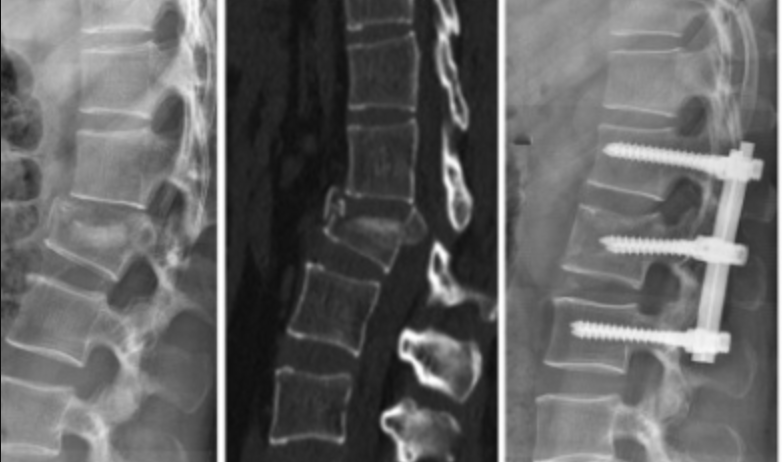
Spine Fracture Treatment: Understanding the Basics
Spine fractures are serious injuries that require immediate and specialized Spine
fracture treatment medical procedure. These fractures can result from various causes,
including trauma, osteoporosis, and certain medical conditions. The treatment of spine
fractures is complex and varies depending on the severity and location of the fracture,
as well as the overall health and needs of the patient. It is essential to have a
personalized treatment plan to ensure the best possible outcomes. In Jaipur, Rajasthan,
the need for specialized spine fracture treatment is particularly significant due to the
diverse population and variable healthcare needs.
Spine fractures can be categorized into several types, including compression fractures,
burst fractures, fracture-dislocations, and others. Each type of fracture requires a
different approach to treatment. For instance, compression fractures often result from
osteoporosis and may be treated with conservative methods such as bracing and physical
therapy. On the other hand, burst fractures, which involve the backbone breaking into
multiple pieces, may require surgical intervention to stabilize the spine and prevent
further damage.
The goals of spine fracture treatment include relieving pain, stabilizing the spine,
preventing further injury, and restoring function. Achieving these goals requires a
multidisciplinary approach that may involve orthopedic surgeons, neurosurgeons, physical
therapists, and other healthcare professionals. By working together, these experts can
develop a comprehensive treatment plan that addresses all aspects of the patient's
condition.
Dr. Jalaj's Approach: Personalized Care for Optimal Outcomes
Dr. Jalaj is renowned well-known for his patient-centered approach to spine fracture
treatment. He believes that each patient is unique and requires a personalized treatment
plan to address their specific needs. His approach involves a thorough assessment of the
patient's condition, including their medical history, the nature of the fracture, and
their overall health status. By considering these factors, Dr. Jalaj easily develop a
comprehensive treatment plan that aims to promote healing, reduce pain, and restore
function.
One of the key factors, Dr. Jalaj's approach is his emphasis on patient education. He
ensures that patients and their families are well-informed about the nature of the
fracture, the available treatment options, and the expected outcomes. This allows
patients to make informed decisions about their care and actively participate in the
treatment process. By facilitating a common relationship with his patients, Dr. Jalaj
can tailor the treatment plan to meet their individual needs and preferences.
Advanced Diagnostic Techniques: Accuracy in Diagnosis and Treatment
To accurately diagnose spine fractures and determine the most appropriate treatment
plan, Dr. Jalaj utilizes advanced diagnostic techniques. These may include imaging
studies such as X-rays, CT scans, and MRI scans, which provide detailed information
about the fracture and surrounding structures. In addition to imaging, Dr. Jalaj may
also use other diagnostic tools, such as bone density tests and nerve conduction
studies, to gain a complete understanding of the patient's condition. By using these
advanced techniques, he can ensure a precise diagnosis and develop a targeted treatment
plan.
Imaging studies play a crucial role in the diagnosis and management of spine fractures.
X-rays are often the first imaging modality (method) used to assess the spine, as they
can quickly identify fractures and provide an overview of the spinal alignment. However,
X-rays may not always reveal the full extent of the injury, particularly in cases of
complex fractures. In such instances, CT scans and MRI scans are invaluable tools. CT
scans provide detailed cross-sectional images of the spine, allowing for a more
comprehensive assessment of the fracture. MRI scans, on the other hand, are particularly
useful for evaluating soft tissues, such as the spinal cord and nerves, which may be
affected by the fracture.
Bone density tests are particularly important for patients with osteoporosis or other
conditions that weaken the bones. These tests measure the density of the bones and help
determine the risk of future fractures. By identifying patients with low bone density,
Dr. Jalaj can implement preventive measures, such as medications (medicinal) and
lifestyle modifications, to reduce the risk of subsequent fractures. Nerve conduction
studies are used to assess the function of the nerves and can help identify any nerve
damage resulting from the fracture. This information is crucial for developing a
treatment plan that addresses both the structural and neurological aspects of the
injury.
Comprehensive Recovery: Ensuring Long-Term Success
Recovery is a critical factor for spine fracture treatment, as it helps patients recover
strength, mobility, and function. A well-structured recovery program can significantly
improve the overall outcome and quality of life for patients with spine fractures. Dr.
Jalaj collaborates with a team of physical therapists and recovery specialists to
develop personalized rehabilitation plans tailored to each patient's needs.
The recovery process typically begins with complete assessment of the patient's physical
condition, including their range of motion, muscle strength, and functional abilities.
Based on this assessment, the rehabilitation team designs a program that incorporates
various good exercise and interventions. These may include stretching and refreshing
exercises, balance and coordination training, and functional activities aimed at
improving daily living skills.
Throughout the recovery process, patients are closely monitored for progress and any
potential complications. Regular follow-up appointments with Dr. Jalaj and the recovery
team ensure that the treatment plan is adjusted as needed to achieve the best possible
outcomes. By prioritizing comprehensive rehabilitation, Dr. Jalaj helps patients achieve
long-term success and return to their normal activities with confidence.

.jpeg)
.jpeg)
.jpeg)
.jpeg)
.png)
.png)
.png)
.png)
.png)
.png)
.png)
.png)